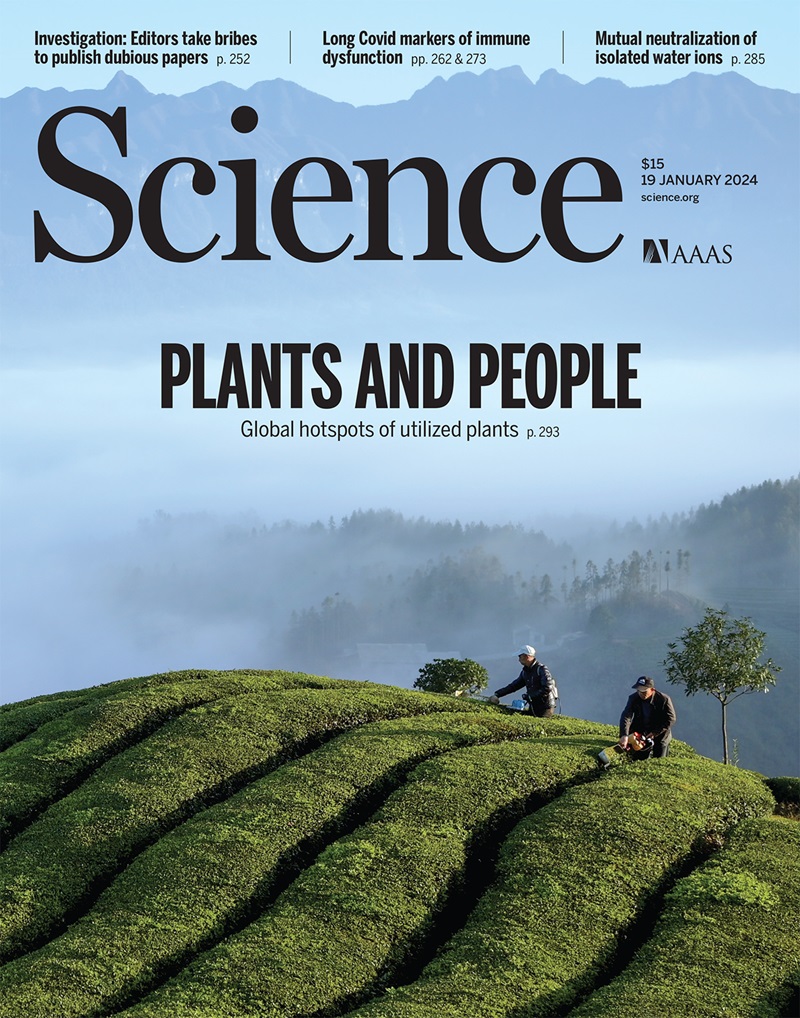An uphill grind for wild plant populations
IF 44.7
1区 综合性期刊
Q1 MULTIDISCIPLINARY SCIENCES
Science
Pub Date : 2025-05-01
引用次数: 0
Abstract
The range of temperature and precipitation across which populations remain viable forms the climatic niche for terrestrial life. Many plant (1) and animal (2) species consist of populations that are locally adapted to their preindustrial climates, with each subgroup tolerating a smaller range of climate conditions compared with the whole species (3). Will existing genetic variation be sufficient for the adaptation needed to reverse population decline as climates change (a process known as evolutionary rescue) (4)? Can migration from warmer to cooler regions provide the diversity required for climate adaptation (genetic rescue) (5)? On page 525 of this issue, Anderson et al. (6) report that even for the widely distributed species of the rock cress Boechera stricta in the United States Rocky Mountains, gene flow from warmer to cooler elevations—possibly facilitated by human intervention—is needed to support future survival of some plants in a warming climate.
对野生植物种群来说,这是一个艰难的考验
种群维持生存的温度和降水范围形成了陆地生物的气候生态位。许多植物(1)和动物(2)物种由当地适应工业化前气候的种群组成,与整个物种相比,每个亚群耐受的气候条件范围较小(3)。现有的遗传变异是否足以适应气候变化所需要的逆转人口下降的过程(一个被称为进化拯救的过程)?从温暖地区到寒冷地区的迁徙能否提供气候适应所需的多样性(基因拯救)(5)?在本期的第525页,Anderson等人(6)报道说,即使是在美国落基山脉广泛分布的岩石植物Boechera stricta,也需要基因从温暖的海拔流向凉爽的海拔——可能是由人类干预促进的——以支持某些植物在变暖气候下的未来生存。
本文章由计算机程序翻译,如有差异,请以英文原文为准。
求助全文
约1分钟内获得全文
求助全文
来源期刊

Science
综合性期刊-综合性期刊
CiteScore
61.10
自引率
0.90%
发文量
0
审稿时长
2.1 months
期刊介绍:
Science is a leading outlet for scientific news, commentary, and cutting-edge research. Through its print and online incarnations, Science reaches an estimated worldwide readership of more than one million. Science’s authorship is global too, and its articles consistently rank among the world's most cited research.
Science serves as a forum for discussion of important issues related to the advancement of science by publishing material on which a consensus has been reached as well as including the presentation of minority or conflicting points of view. Accordingly, all articles published in Science—including editorials, news and comment, and book reviews—are signed and reflect the individual views of the authors and not official points of view adopted by AAAS or the institutions with which the authors are affiliated.
Science seeks to publish those papers that are most influential in their fields or across fields and that will significantly advance scientific understanding. Selected papers should present novel and broadly important data, syntheses, or concepts. They should merit recognition by the wider scientific community and general public provided by publication in Science, beyond that provided by specialty journals. Science welcomes submissions from all fields of science and from any source. The editors are committed to the prompt evaluation and publication of submitted papers while upholding high standards that support reproducibility of published research. Science is published weekly; selected papers are published online ahead of print.
 求助内容:
求助内容: 应助结果提醒方式:
应助结果提醒方式:


